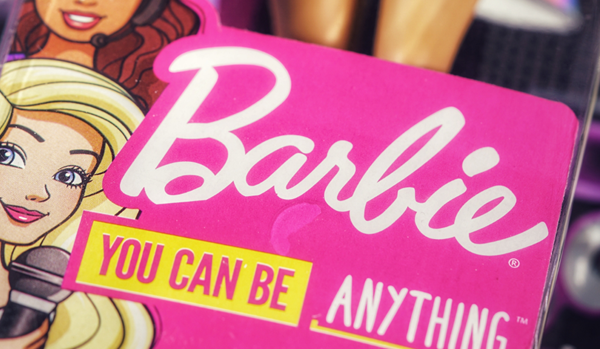By Kate Wellham

As someone who works in the film sector, I’ve been absolutely fascinated by the phenomenon of the Barbie movie. But for me, a producer who helps to bring film to life through live film screening events of all kinds, my interest lies not necessarily in the content of the film itself, but in the way audiences and brands engaged with it in the real world.
For example, I bet you thought of Barbie as soon as you saw the cover of The Alea Journal today.
What Barbie has done perfectly is break out of her box and into our daily lives. Whether we were interested in the movie or not, it’s fair to say it’s been inescapable for months prior to its release.
Even if you haven’t seen the movie, and have no intention of seeing it, This has been thanks to a combination of brand partnerships – with Barbie and her signature pink appearing on products both physical and digital – and customisable ways audiences have been able to interact with and join the Barbie universe, through things like AI filters and photo opportunities.
We’ve also seen famous names associated with the movie and its soundtrack, not only the on-screen stars but also musical artists who have released songs and videos in association with it. The hype has permeated so many aspects of real life that seeing the movie itself has only been a small 1 1 part of the Barbie experience.
Engaging with the film has been made so simple and fun that audiences have been walking around doing the marketing themselves, from wearing copious amounts of pink to saying “hi Barbie” to each other, making Ken puns, and sharing photos posing in human-sized Barbie boxes. It’s been a triumph of ‘live cinema’ on a global scale.
Pair that with the manufactured battle with the Oppenheimer release and all the juxtaposition that provided, and this was a movie release that had more attention than any other in recent memory.
Of course part of this was due to the star herself. And no, not Margot Robbie (although she has to take some credit, of course) but Barbie.
This internationally-famous doll has been a staple of childhood around the world since the late 1950s, and has taken the cultural temperature every step of the way. There’s a Barbie for every fashion trend, for every country, for every career. Barbies that were nothing more than toys when they were made have since become collectors’ items and art in their own right.
And while Barbie doesn’t exactly represent every body type, she goes quite a long way towards representing other facets of life. There are Barbies of every ethnicity, Barbies doing every impressive or interesting job you can imagine, there’s a Barbie in a hijab, a Barbie in a wheelchair, and yes there are Barbies with babies – despite Barbie coming into existence initially in response to baby dolls being the only option available.
Mattel has done much of the work preparing audiences for this movie over the last 60+ years by making efforts to reach girls all over the world with Barbies that look just like them, no matter who those little girls are or where they are.
Their outreach has been so thorough that women of all ages were interested in seeing this movie and finding out exactly how it was going to bring their plastic childhood friend to life. The stage has never been set so perfectly for a cultural whirlwind, and audiences were wild for it. And now to the content itself. The movie is, in my opinion, very good.
It’s not the best thing I’ve ever seen, it makes some interesting observations about womanhood that are not news to women, but are still good to see discussed in such a public way. It’s funny, it’s visually interesting, it’s stylish and it’s engaging. It was always going to be a winner, though, because all it needed to do was play its small part in the Barbie experience by not being actively bad.
The Barbie movie phenomenon was very little about the movie, and so much about getting us all to turn the real world into Barbie Land for a while.
That’s live cinema, and it’s the reason I do what I do.
In an era when staying indoors alone and consuming film has never been easier – thanks to on-demand streaming – film has to try something completely different if we want to encourage in- person social interaction. It has to make memories.
In the early days of cinema, going to the theatre was the only way to see a film, and there would often be dressing up among the crowd, and a live musical performer providing the audio. Seeing a movie was an exciting event, a real occasion, and there’s no reason it can’t be again.
All we need to do is find new and innovative ways to blend the real world with the fictional one – just like Barbie did – and we can open up new opportunities for audiences and business alike.
